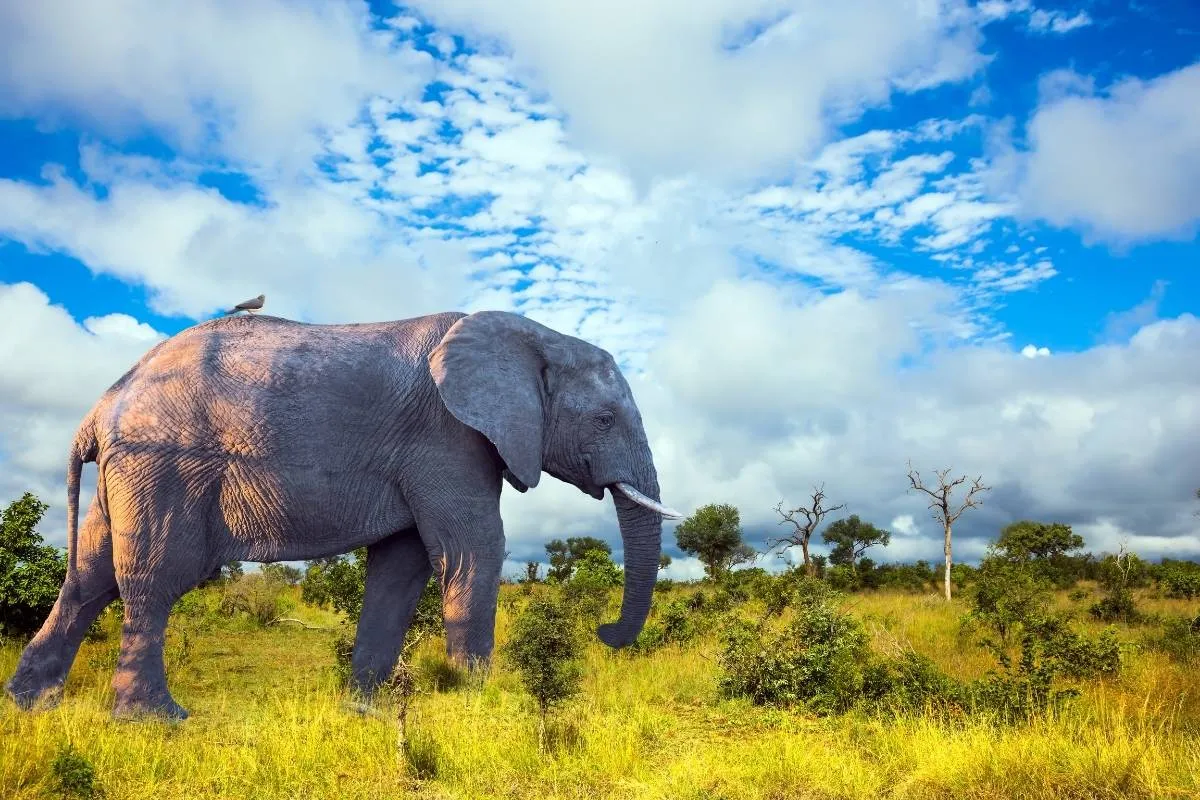Elephant
Elephants, Africa’s largest land animals, roam savannas, forests, and grasslands in herds led by a matriarch. With their iconic trunks, tusks, and floppy ears, African elephants (bush and forest species) eat up to 300 pounds of vegetation daily. Known for deep family bonds and intelligence, they’re a safari highlight, often spotted bathing in rivers.

